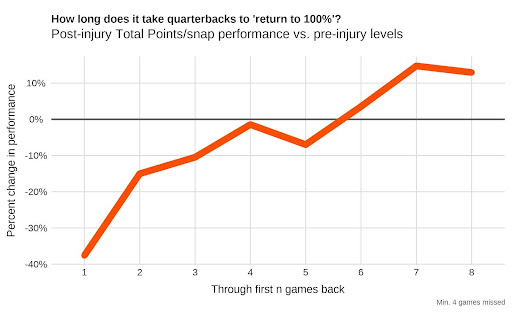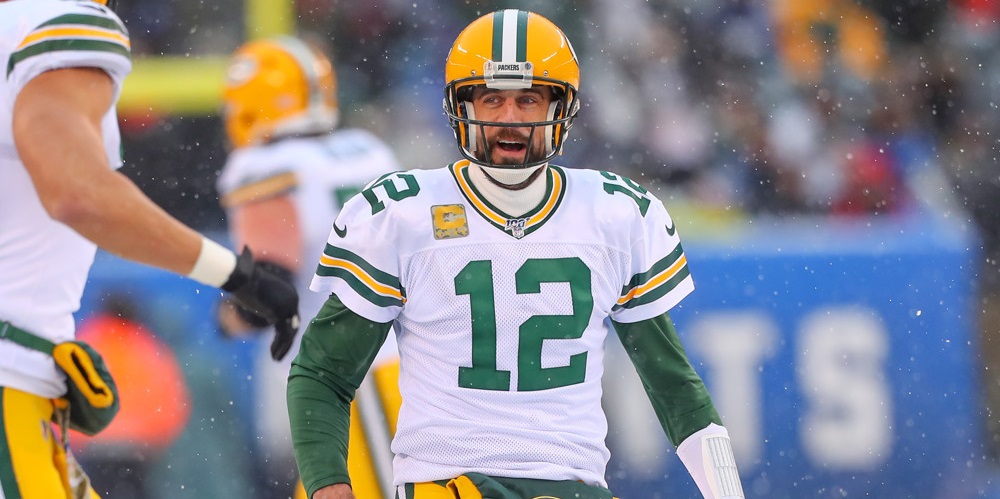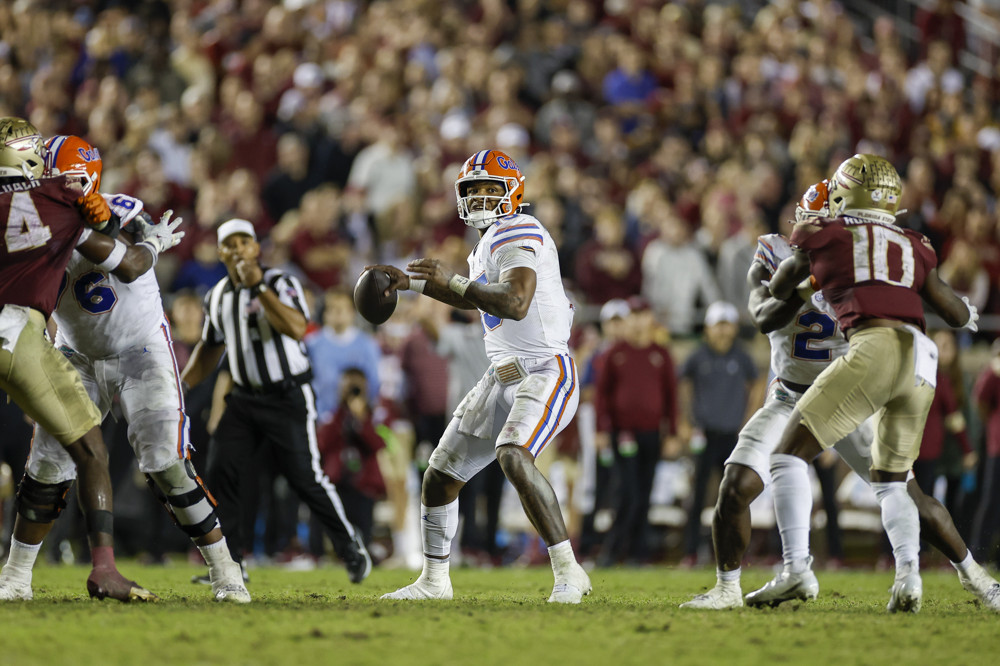Photo: Scott Winter/Icon Sportswire
Jon Gruden once asked Tom Moore why Peyton Manning’s backups didn’t get more reps, to which Moore replied: ‘Fellas, if 18 goes down we’re f*****, and we don’t practice f*****.’
According to both conventional wisdom and every modern metric, the quarterback is the most important player on a football field. If you’ve ever seen an Adam Schefter tweet about a quarterback’s contract extension, or looked at an expected points added (EPA) or wins above replacement (WAR) leaderboard, you already know this. And so you also understand why the quarterback is the most protected player on the field.
There are all sorts of rules in place to protect these players. You cannot hit the quarterback late. You cannot hit him high. You cannot hit him low. You cannot land on him. And may God smite you if your hands get anywhere near his face.
But bloodsport is bloodsport, and quarterbacks still can – and still do – get injured. And when quarterbacks go to IR, dreams go to die. This, too, is widely understood. Just last year, an Achilles rupture cost Aaron Rodgers and the Jets their season, and a torn ligament in Joe Burrow’s throwing wrist contributed to the Bengals falling short down the home stretch.
Both of these teams are happy to have their respective signal-callers back in the saddle, but it’s obvious through two weeks of action that neither player is quite right just yet.
63% of Burrow’s throws have traveled five yards downfield or less, and he ranks 19th among in accuracy rate on the (admittedly few) throws he has made further downfield. Meanwhile, Rodgers, who has made a career out of extending plays, currently ranks 30th in Total Points/play on off-platform throws (and he’s been excellent with his feet planted). Burrow is not ripping the ball, and Rodgers is not moving well, even for his age.
So, these players have returned to play, but the question is when will they return to form? We at Sports Info Solutions feel we are well qualified to attempt to answer such a question given the fact that we collect and maintain the most comprehensive football injury database.
In looking at quarterbacks who have missed at least four consecutive games since 2017 and then played meaningful snaps upon their return – i.e. quarterbacks who are not spot starters/backups – we can use Total Points to compare their post-injury performance to their pre-injury performance and determine when the two more or less equalize.
We used an eight-game rolling average up to the game in which the player was injured to establish ‘pre-injury performance’ and then looked at their cumulative, per-play performance through n weeks back from injury. That is, what was their Total Points/play after their first game back, what was their Total Points/play through two games back, and so on.
What we found was that it takes, on average, about four weeks for players to stabilize close to their pre-injury efficiency levels.

‘Stabilize’ is the operative term here. If a player’s pre-injury Total Points/play was 0.2, and he averaged 0.0 Total Points/play on 30 plays in Week 1, and then 0.2 Total Points/play on 30 plays in Week 2, his Week 2 performance will match how he was playing before injury, but it has not yet stabilized in the aggregate there because his Total Points/play over two weeks is still only 0.1.
It is also important to make the distinction that this does not mean that quarterbacks are guaranteed to stabilize at their own pre-injury standards after four weeks. It should only be interpreted to mean that it is generally unrealistic to expect them to stabilize in the aggregate at their own standards until about four weeks. Therefore, there is not much that can be reliably and meaningfully said about these first few weeks of performance. It is, of course, possible that an injury permanently affects a player in some way. The key takeaway here is that the first month after a quarterback returns from a significant injury should not be seen as any sort of indictment against him.
Injuries obviously vary from each other in terms of severity, region, and the ways in which they compromise player movement, but there is one common theme in terms of returning from them: the mental component. Sports Info Solutions’ head of injury operations John Verros, a trained kinesiologist, regards this as an inevitable obstacle for players:
“There is a subconscious, uncontrollable feeling that players have – to protect the body part that was injured,” he said, “And that alters their decision-making.”
Note that Verros refers specifically to decision-making, which is arguably the most important trait for quarterbacks.
“If a player has a full offseason to recover, then it is more likely that they’ll be 100% physically and mentally, but there are no reps like game reps for the mental component,” Verros said.
Burrow and Rodgers, as well as Kirk Cousins and Anthony Richardson, who we’ve yet to mention up to this point, are all getting back into the swing of things physically and mentally. Jordan Love is likely to find himself in the same boat in the not-too-distant future. It’s optimistic to expect them to hit the ground running, but, as they say, time heals all wounds.


